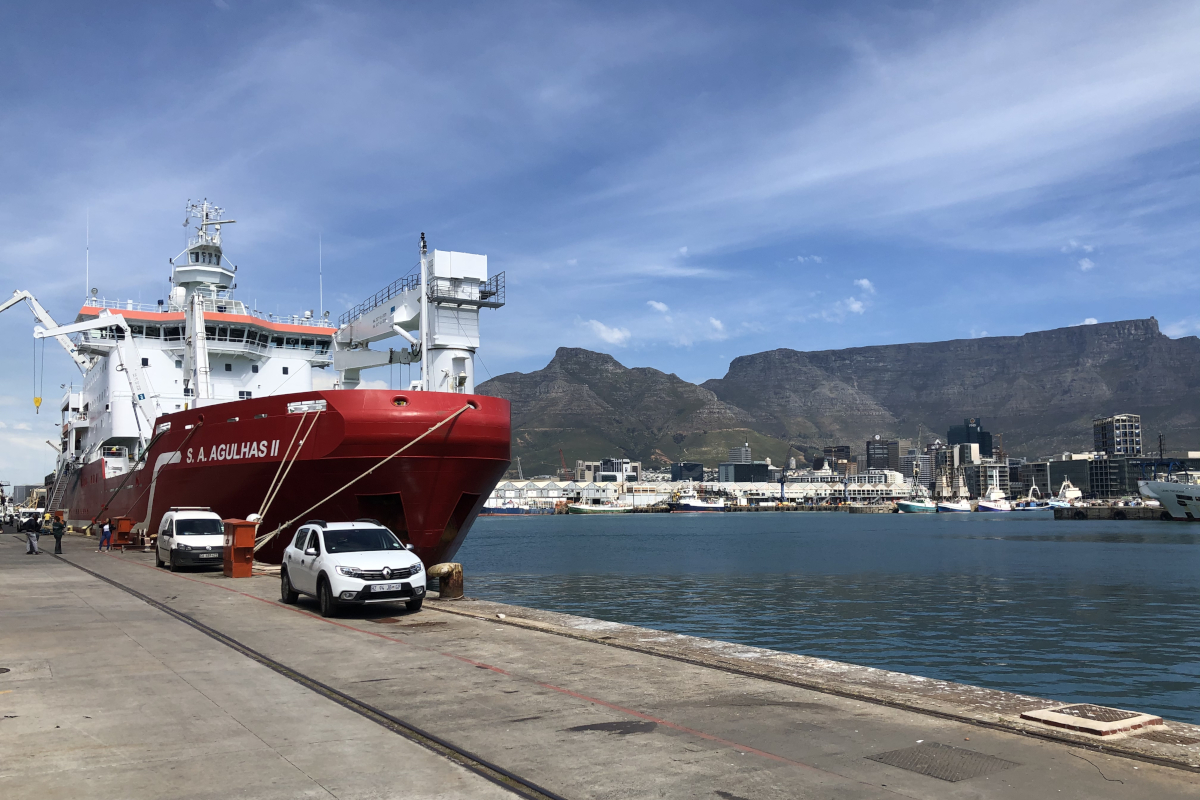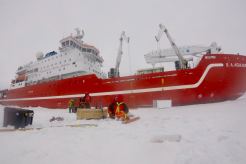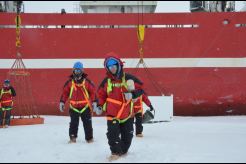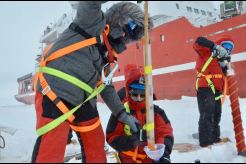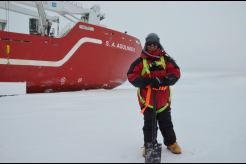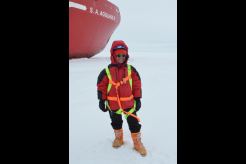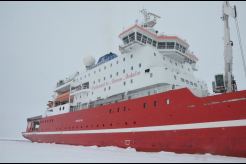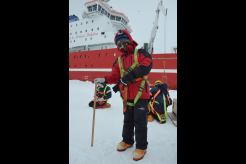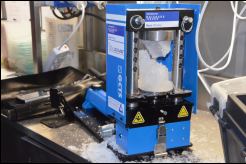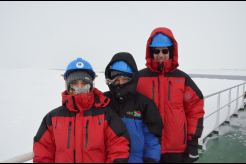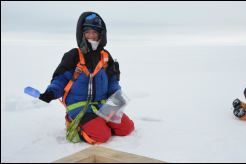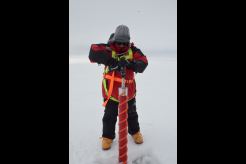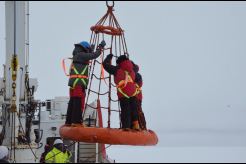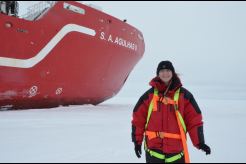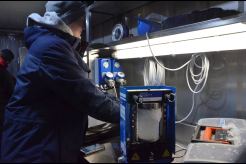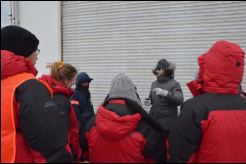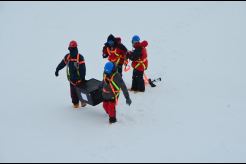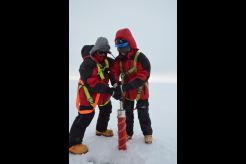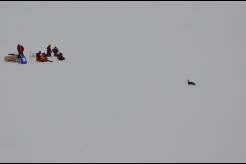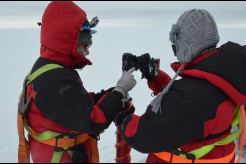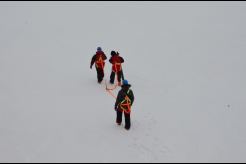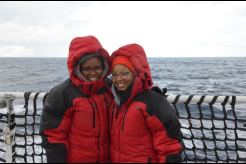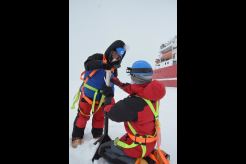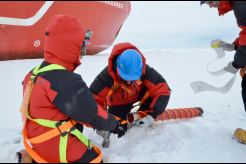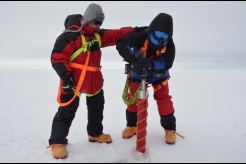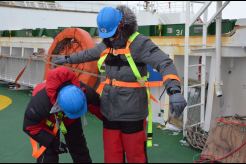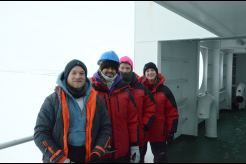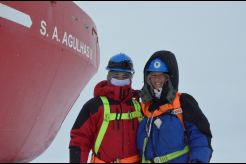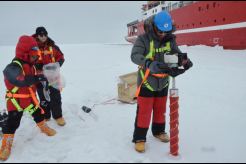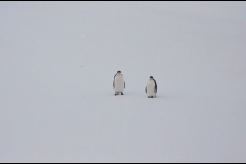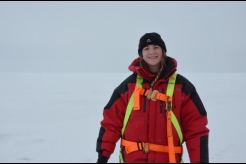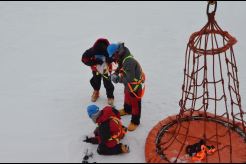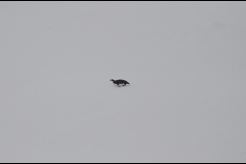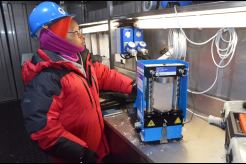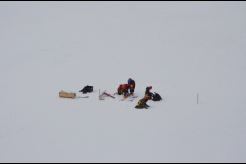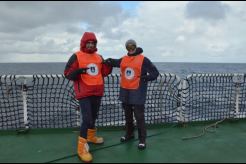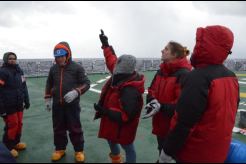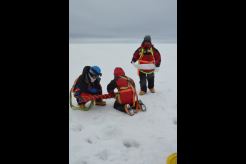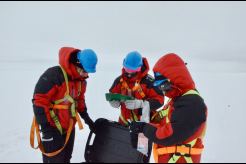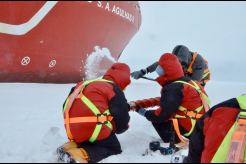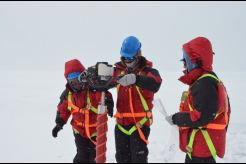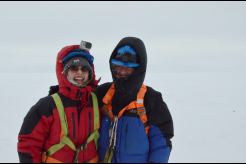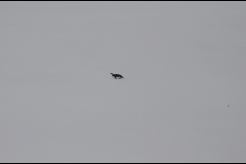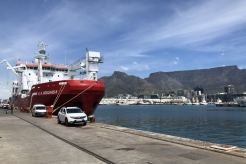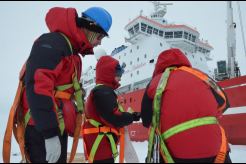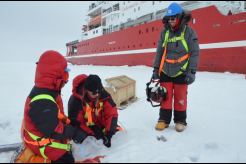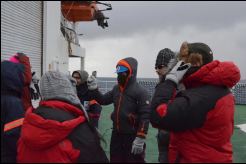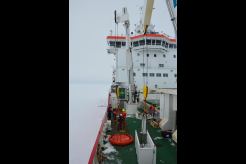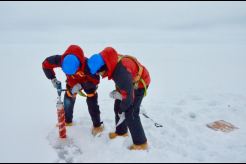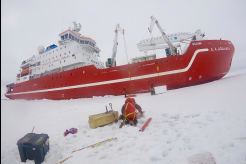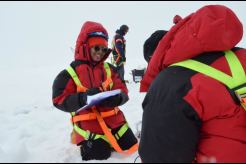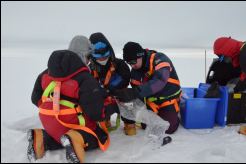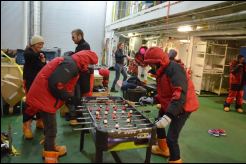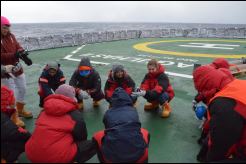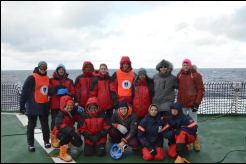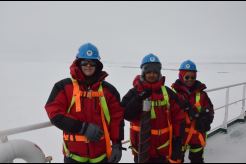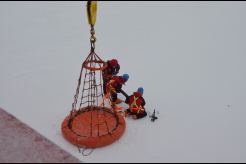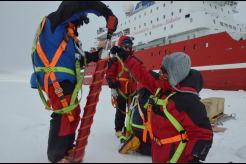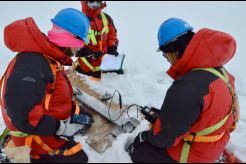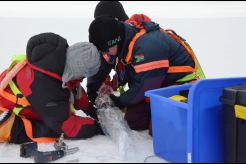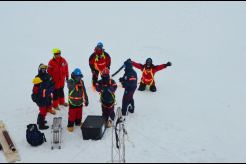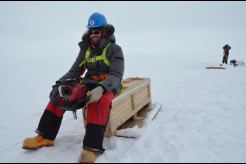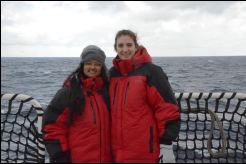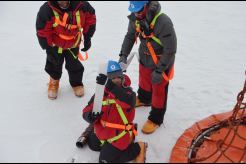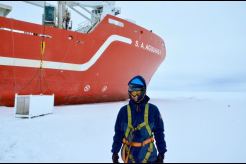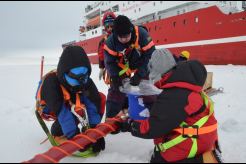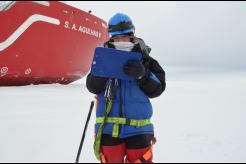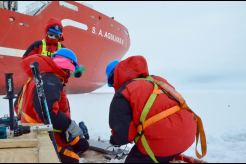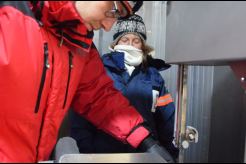Spring-Cruise 2019
Interview with Felix PaulInterview about the Spring-Cruise 2019
How does one feel before a six-week journey to the Antarctica?
First of all I am glad and grateful that I can participate in a second tour to the Antarctica. It gives us the opportunity to validate our results from the last tour and get additional measurement points. But of course I'm also a bit queasy about the feeling of being on a boat for six to seven weeks without having the opportunity to phone friends, go for a walk or just surf the internet. Nevertheless, the anticipation of the next expedition outweighs by far.
Why does a tour take place in winter and spring?
Our goal is to collect as much as possible about the conditions "on site" – i.e. in the ice. The weather and sea conditions in spring and winter are very different. So we assume that the ice will also be very different. In winter we were confronted with a growing ice front. We were able to take samples from the ice that was being formed. In spring we will encounter a receding ice layer. This trip is the first to be carried out as part of the SCALE programme in spring. So we are all excited to see what awaits us on site.
What differences are expected?
The beginning of the marginal ice zone, which is the transition from open ocean to consolidated ice, will be much further south. The ice will continue to recede as temperatures rise. I expect that we will find significantly less frazil ice, as well as fewer and smaller pancake ice floes.
How do you spend your time on such a ship?
The ship offers optimal conditions to prepare the experiments. The University of Cape Town is back with its polar laboratory, which we also use. There are also many places to work. Of course, there is also free time on the ship, which can be spent in the gym or sauna, for example. In the evening, a bar is open where you can have a chat with the other scientists.
What did you learn from the first tour and what can you do better the second time?
The last tour was our first expedition to the Antarctica. We exchanged ideas with the more experienced groups in advance of the first tour and already did a lot right back then. Of course there are still some things that have been improved – be it the repair of machines or the packing of heating pads for the fingers and feet. The processes in the ice are also analysed and readjusted after each tour. The point is to make the best use of the short time in the ice to get as many samples as possible.

